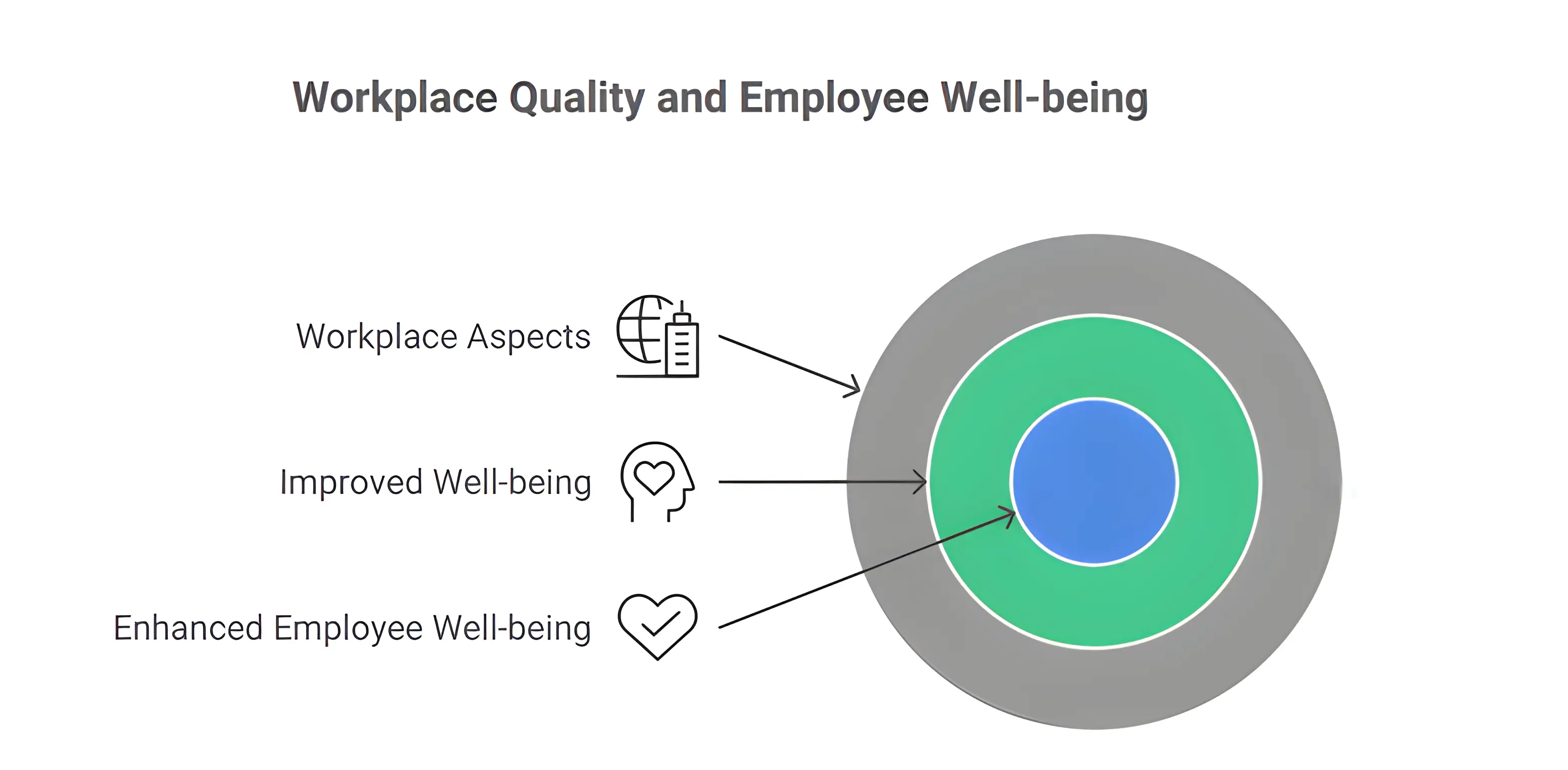The Ideal Office Space Per Employee in Singapore: A Strategic Guide to Boosting
In Singapore’s dynamic business environment, the way you plan and allocate office space can be a silent driver of success or a hidden cost draining morale and efficiency. The days of cubicle farms and rigid floor plans are gone. Today, the smartest companies are reevaluating the amount of space each employee truly requires, especially with hybrid work, wellness initiatives, and flexible seating becoming the new norm.
This blog examines the ideal office space allocation per employee in Singapore, why it matters more than ever, and how to achieve it to fuel growth and engagement in the modern workplace.
What is the Importance of a thoughtful Office Space per Employee?

Office space in Singapore is more than just square footage—it’s an important factor that influences productivity, collaboration, employee well-being, and talent retention. In a fast-paced business environment like Singapore’s, the quality and layout of your workspace can directly affect your team's performance and overall workplace satisfaction.
A well-sized and thoughtfully designed office helps reduce the feeling of being cramped, improving focus and efficiency. Conversely, insufficient space can lead to discomfort, stress, and even reduced attendance. The layout also matters; for instance, open and flexible spaces encourage communication and collaboration, whereas rigid cubicle setups hinder team dynamics and innovation.
A flexible office design also plays a strategic role in attracting and retaining top talent in a competitive market. Offices that feature natural light, ergonomic furniture, modern fit-outs, and breakout areas not only elevate the work environment but also reflect a company's values and culture. Just as leading global firms like Google are known for their impressive office designs, Singapore-based businesses are increasingly investing in spaces that enhance employee experience.
What is the Connection Between Workplace Quality and Employees ' Well-Being?

Workplace quality plays a critical role in shaping the overall well-being of employees. As illustrated, this connection can be understood in three key layers: workplace aspects, improved well-being, and enhanced employee well-being, covered below.
Workplace Aspects
Firstly, workplace aspects—such as lighting, layout, noise levels, air quality, furniture ergonomics, and access to collaborative or private spaces—form the foundation of the physical and psychological work environment. These elements may seem basic, but they have a significant impact on how employees feel and perform throughout the day.
Improved Well-being
Secondly, when these aspects are thoughtfully designed and well-maintained, they lead to improved well-being. Employees experience better focus, reduced stress, increased comfort, and greater job satisfaction. For example, a workspace with natural light and quiet zones can reduce fatigue and mental strain, allowing employees to remain engaged and productive.
Employee Well-being
Lastly, these improvements culminate in enhanced employee well-being—a holistic state where employees not only perform efficiently but also feel mentally and emotionally supported. This deep-level impact boosts morale, reduces absenteeism, and contributes to long-term talent retention.
What are the 5 Common Tips for Office Space per Employee in Singapore?

Optimising office space in Singapore is crucial for productivity, collaboration, and efficiency, especially with evolving hybrid work models. This section provides five tips, covering flexible layouts, strategic design, technology integration, and desk allocation.
1. Strategic Space Allocation: Beyond the Desk
When planning office space, it's vital to think beyond individual workstations. A comprehensive approach allocates 100–150 sq ft per person, and this figure should inherently include shared amenities. This means factoring in meeting rooms, collaborative breakout areas, quiet zones, and even circulation space.
2. Role-Based Needs: Tailoring Spaces to Functions
A one-size-fits-all approach to office design is rarely practical. Instead, consider the diverse needs of your office space per employee and responsibilities. For instance, open-plan layouts are highly beneficial for teams that require frequent collaboration and brainstorming. These spaces encourage spontaneous discussions and a sense of community.
3. Hybrid Work Design: Embracing Flexibility
The rise of hybrid work models necessitates a shift towards flexible office designs. Implementing solutions like hot-desking allows employees to choose an available workstation when they are in the office, reducing the need for every employee to have a dedicated desk.
4. Incorporation Office Space per Employee, Technology, and Smart Solutions
Modern office design in Singapore increasingly leverages technology to enhance efficiency and flexibility. Integrating innovative building systems can optimise energy consumption, lighting, and climate control, contributing to a more sustainable and comfortable environment.
5. Prioritising Employee Well-being and Amenities
Beyond core work areas, the well-being of employees should be a central consideration in office space planning. Providing amenities such as ergonomic furniture, ample natural light, and integrating biophilic elements can significantly boost morale and productivity. Additionally, dedicated wellness rooms, quiet zones for focused work or relaxation, and communal areas that encourage social interaction all contribute to a positive work culture.
Ready to Optimise Your Office Space per Employee in Singapore?
Optimising office space per employee in Singapore isn't just a logistical exercise—it’s a strategic move that affects your team's productivity, well-being, and your company’s bottom line. By balancing function with flexibility and understanding your team’s unique needs, you can create a workspace that empowers performance and supports long-term growth.
Let Office Hub simplify the process. Contact us today to explore flexible office spaces tailored to your team’s size, work style, and budget—complete with expert guidance, transparent pricing, and curated listings in Singapore’s most sought-after locations.


